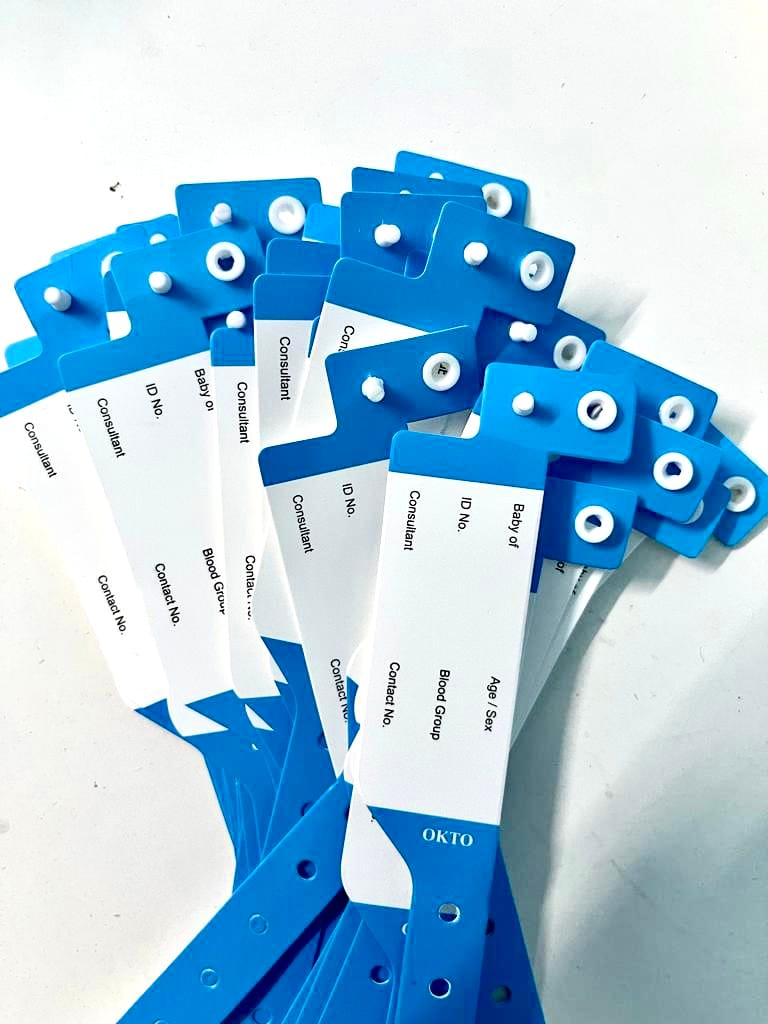Individual Identification Bands: A Key Tool for Improved Medical Accuracy
Individual recognition bands stand for a crucial element in the quest of clinical precision and person safety and security within healthcare environments. Their capacity to communicate necessary person details, paired with advancements such as barcode and RFID technology, positions them as essential tools for improving and minimizing errors treatment delivery. As doctor significantly embrace standardized practices, the ramifications for communication and management performance come to be more clear. Nevertheless, real extent of their effect on individual results and overall healthcare quality warrants even more exam. What concealed difficulties and possibilities exist in their implementation?

Relevance of Individual Recognition
Individual identification is a vital element of health care that ensures the security and precision of clinical therapy. Proper identification methods are necessary to avoid clinical mistakes, which can cause damaging client outcomes, including inaccurate drug management, misdiagnosis, or improper therapy strategies. The value of exact patient identification can not be overemphasized, as it offers as the structure for effective communication among doctor.
In environments where multiple clients are receiving treatment at the same time, the risk of identity complication boosts. Executing robust identification systems helps mitigate these risks and enhances client security. Patient Identification Band. Precise recognition adds to the honesty of medical records, making certain that patient backgrounds, allergic reactions, and previous treatments are correctly connected to the appropriate individual.
Furthermore, compliance with governing requirements and accreditation requirements commonly mandates stringent patient recognition procedures, fostering a society of liability and high quality care. Inevitably, the value of client identification goes beyond simple management jobs; it is a fundamental element of supplying top notch health care that focuses on client safety and improves scientific outcomes. Purchasing effective recognition practices is not simply useful-- it's imperative in today's facility medical care landscape.
Kinds of Client Recognition Bands
In healthcare settings, various sorts of client recognition bands are utilized to ensure exact recognition and boost security. These bands work as a crucial device in preventing medical errors associated with person misidentification.
The most common type is the common wristband, usually made from resilient plastic and published with the person's name, day of birth, and a distinct recognition number. These wristbands are often color-coded to communicate certain details, such as allergies or other medical problems.
An additional kind is the barcode wristband, which includes a scannable barcode connected to the client's electronic health and wellness document. This technology permits reliable information retrieval and verification during medicine management and various other clinical processes.
Additionally, RFID (Radio Regularity Identification) bands are becoming progressively prominent. These bands can connect wirelessly with health center systems, permitting real-time tracking and recognition of clients, consequently boosting and streamlining workflows client security.

Advantages for Healthcare Carriers
Making use of individual identification bands supplies considerable benefits for health care providers, boosting both operational efficiency and person security. These bands work as an important tool in simplifying client management procedures (Patient Identification Band). By making sure precise identification, doctor can decrease the threat of administrative mistakes, such as mislabeling samples or misdirecting therapies, which can bring about costly hold-ups and issues
Moreover, individual recognition bands assist in seamless communication amongst the health care group. With standard and readily easily accessible client info, service providers can make educated choices quickly, boosting general operations. This efficiency is especially essential in high-pressure environments such as emergency situation departments, company website where time-sensitive interventions are essential.
The implementation of recognition bands likewise supports compliance with regulatory requirements and ideal techniques, thereby minimizing the danger of lawful consequences originating from recognition errors. The use of these bands boosts data accuracy in digital wellness documents, leading to better care sychronisation and connection.
Impact on Patient Safety And Security
Precise individual identification is a keystone of medical care security, dramatically minimizing the chance of errors that can compromise client wellness. The use of client recognition bands is crucial in guaranteeing that each client receives the right therapy, drugs, and treatments. These bands function as a trusted reference point for healthcare specialists, reducing the danger of misidentification, which can cause significant effects such as wrong medicine administration or surgical mistakes.
The application of standardized patient recognition bands contributes to a culture of security within medical care settings. By providing clear, conveniently understandable information, these bands help to reinforce the importance of validating person identification at every stage of care. They assist in interaction among staff members, ensuring that every person entailed in a person's care is mindful of their details requirements and demands.
Furthermore, using client recognition bands can boost the accuracy of electronic health and wellness documents, further lowering the potential for errors - Patient Identification Band. By prioritizing client safety and security via efficient recognition practices, healthcare carriers can cultivate trust fund and self-confidence amongst individuals, ultimately resulting in much better scientific results and boosted individual satisfaction. The influence of correct individual identification can not be overstated; it is a basic aspect of top quality healthcare delivery
Best Practices for Application
Effective execution of person identification bands is crucial for boosting individual safety and lessening errors in health care setups. Team training is necessary; all team participants have to understand the importance of accurate client identification and the treatments for band application.
Second, the style of the recognition bands need to focus on exposure and durability. Bands should be simple to check out, consist of essential person information, and withstand daily wear. Using color-coding can further boost quick recognition.


Third, integrating electronic wellness records (EHR) with recognition band systems can streamline operations. Automated alerts for disparities in person identification can stop possible mistakes before they take place.
Lastly, conducting routine audits and responses sessions will certainly help determine areas for improvement. Involving personnel in these discussions fosters a culture of safety and responsibility.
Final Thought
In verdict, individual identification bands play an important function in improving clinical accuracy and ensuring client security within health care systems. By utilizing various types of identification bands, doctor can dramatically lower the risk of misdiagnoses and medicine mistakes. The assimilation of innovative technologies, such as barcodes and RFID, further enhances information why not try this out monitoring and monitoring. Embracing best practices for execution fosters a society of security, ultimately resulting in improved patient end results and better count on healthcare solutions.
Patient identification bands represent a critical element in the pursuit of clinical precision and person security within healthcare settings.Using patient recognition bands offers significant advantages for healthcare carriers, improving both functional effectiveness and individual safety. By focusing on person safety via effective recognition practices, health care companies can promote depend on and confidence amongst patients, inevitably leading to better clinical outcomes and improved client satisfaction.Effective application of individual recognition bands is crucial for improving person safety and his response lessening mistakes in health care settings.In conclusion, patient recognition bands play a crucial duty in enhancing medical precision and ensuring client security within health care systems.